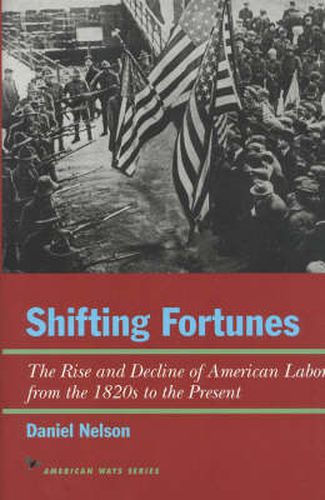Readings Newsletter
Become a Readings Member to make your shopping experience even easier.
Sign in or sign up for free!
You’re not far away from qualifying for FREE standard shipping within Australia
You’ve qualified for FREE standard shipping within Australia
The cart is loading…






How and why have American labor unions grown in the century and a half since the industrial revolution? In this concise and illuminating history of the labor movement, Daniel Nelson traces the ebb and flow of union activity since the early nineteenth century. Rejecting an emphasis on individual leadership or the uniqueness of American conditions, he instead looks to three factors to explain labor’s record: the role of the autonomous worker, the threat of employer reprisals, and the influence of external forces such as government policy. His chief concern is to describe and document the historical experience, especially the erratically rising level of union membership from the close of the nineteenth century to the 1960s, and the reversal of that phenomenon in recent decades. Mr. Nelson devotes special attention to miners’ unions in the years up to the 1950s, to government policy in the New Deal years and after, and to the development of sophisticated anti-union employer strategies in recent years. The strength of Shifting Fortunes lies not only in the scope of its coverage but in its evenhanded portrayal of employer-worker relations.
$9.00 standard shipping within Australia
FREE standard shipping within Australia for orders over $100.00
Express & International shipping calculated at checkout
How and why have American labor unions grown in the century and a half since the industrial revolution? In this concise and illuminating history of the labor movement, Daniel Nelson traces the ebb and flow of union activity since the early nineteenth century. Rejecting an emphasis on individual leadership or the uniqueness of American conditions, he instead looks to three factors to explain labor’s record: the role of the autonomous worker, the threat of employer reprisals, and the influence of external forces such as government policy. His chief concern is to describe and document the historical experience, especially the erratically rising level of union membership from the close of the nineteenth century to the 1960s, and the reversal of that phenomenon in recent decades. Mr. Nelson devotes special attention to miners’ unions in the years up to the 1950s, to government policy in the New Deal years and after, and to the development of sophisticated anti-union employer strategies in recent years. The strength of Shifting Fortunes lies not only in the scope of its coverage but in its evenhanded portrayal of employer-worker relations.